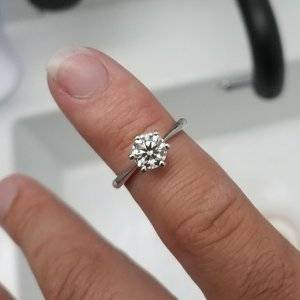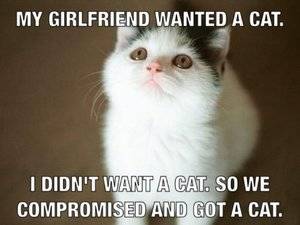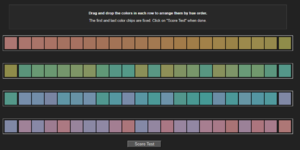- Joined
- Jul 12, 2004
- Messages
- 4,060
Top ideal H&A G/H VS2 stone with a small table + a high crown. If I had a lot of $$$ I'd go F VS1.
What is happening with your new Octavia?
Top ideal H&A G/H VS2 stone with a small table + a high crown. If I had a lot of $$$ I'd go F VS1.

In the brief time I've been on PS, I've made some general observations about PSers' preferences for diamonds:
As with any sweeping generalization, exceptions abound. I'm curious to what extent in the past that you've compromised on the 4Cs in exchange for value, whether you have any regrets, and how you decide if something is enough of a bargain.
- Cut is king - ideal, super ideal, and highly symmetrical old cuts rule.
- Color is subjective, though warmer colors (J & beyond) that send the average consumer running are embraced by many PSers.
- Clarity preference seems to be towards eye clean SI to VS1, though unicorn I1s get high-fives.
- Carat weight trends towards ginormous (1.5+) for engagement rings. Other jewelry varies.
(Edited for grammar)


If I'm buying for my girl....
F+ , VS2+, AGS000, true H&A symmetry and would not be concerned over insignificant size differences at all. Next stone I will likely be very picky as I've come to love 54-55 tables, 34.5 crown and 40.7-40.8 pavilion. Her color sensitivity may push color higher than my own preference.
When recommending to others it depends on their budget and sensitivities and preferences. As a general rule I am always trying to maximize cut, color, clarity and size within their specific parameters. I enjoy finding max value so many times a G/H and very eye clean and mind clean SI1 is what I target.
I think you see many people going down on color and clarity on this forum because so much emphasis is put on cut. A well cut stone appears more white than average stones so you can drop color and increase another area. Also inclusions are looked at more critically in regards to color, location and if they affect light performance. When buying a super ideal, this vetting is already done for you to a large degree so it makes it easier to get warm and fuzzy and downgrading characteristics that are sometimes emphasized on the open market.
But we need to understand why. IMO, the simple answer is (many) consumers just aren't educated well enough to make a good decision so they are increasing the various C's in an attempt to get a great stone. They lack the ability to articulate and determine a great cut stone so increased C's are a security blanket of sorts.
. She saw a GIA D IF in-store and said she saw color in that.I think she must have been high that day, or else she is seeing the "contrast" and calls that color.
Honestly, the more I've dealt with it, the more I'm sick about it. If I had a re-do button I'd just buy a damn D/E and be done with it. Yes, it's becoming a sore spot.
I’d rather have smaller, but better quality, regardless of it being a cs, a diamond, or pearls.
Hurry up so we can see pics of it on her hand!
It depends on the specific stone we are talking about because old cuts are different than modern cuts or newly cut stones made to look like old cuts. Old cuts are their own genre IMO and I do not consider it a sacrifice in any way not to have an ideally cut (as measured by today's cut stones) true old cut stone. I adore their special wonkiness and everything about them. My personal preference is very different than someone else's personal preference and with old cuts there simply (IMO) is no right or wrong. You love and adore what you love and adore.
The perfect marriage of old cut beauty is chunky facets with even light play and a bright beautiful (however one defines it) stone. The color play, the light play and the symmetrical facets all are important and to me one thing I learned is J (and K and L) with VS clarity is my general sweet spot for old cuts (though there are definitely some exceptions!) and the numbers don't matter to me with old cuts. It is what my eye sees over all else. Over the ASET, over the cert, etc. How the stone performs in all different environments indoors and out. This is what matters to me. And at J the tint all but disappears to my eye and that works for me. And the bigger OECs allow me to see those delicious facets up close without the need for glasses. And that makes me happy too.
And part of this decision is a journey as we get to know what we love and adore as it is fluid and changing as we learn more. At each stage I got what I loved at the time (and could afford) and it brought me to what I know is my final diamond for my ER.
With modern cut stones CUT is king and queen and all in between and color is high on the list right after that. G is my sweet spot for MRB (and VS clarity). Higher color in MRBs work for me too though but nothing lower than G for me for MRB.
One of my favorite sayings is "A deal is only a deal if you are getting exactly what you want"
Yoram have no luck finding a rough yet.What is happening with your new Octavia?
I think a lot of color sensitive folks would agree with your post.
The context of this conversation which is really asking us about how we, individual, assess value in the context balancing the 4 Cs, this statement is fine.
As an aside, I find the word "quality" stated in this way for a more general context really annoying. The world quality is inherently a value judgment by the person stating it. An E and F diamond has no inherent "quality" over a J or K or Z color diamond. People decide on quality filtered through our own experiences, judgment, cultural context, and bias. We often speak as if quality is fixed, but it is not. Think of cars. Imagine you have a Ferrari and a Honda Civic. Most would say the Ferrari is a higher quality car. But, if you value reliability and low mechanical costs, the Honda Civic has much more value and thus quality. Ok...detour over.
I personally would not want to wear heavily included, dog pee coloured, poorly cut stones of large size (which we have all seen sold in mall stores to people who value size over the attractiveness of the stone).
When we are limiting our discussions to jewelry, the decision point is typically between size and other factors that are generally accepted markers of perceived quality (in other words, aspects of the item that the general public and hence the various grading systems have decided are important markers of perceived quality - which is why they determine perceived value and price). For diamonds this is cut, clarity, and colour. This is about the same for CS, with various other treatments also coming into play, depending on the type of stone. For pearls, things like surface quality, luster, body colour/overtone, and shape come into play. For gold, this is purity and (sometimes) quality of workmanship. So you may find the word quality annoying, but that doesn’t change the fact that as a global market, there are certain aspects of stones or jewels that are prized above others, which then determines the perceived quality, value, and price of an item on the open market.
I personally would not want to wear heavily included, dog pee coloured, poorly cut stones of large size (which we have all seen sold in mall stores to people who value size over the attractiveness of the stone). I would also not want a heavily included CS with a large window and poor colour saturation, no matter how big it might be. Nor would I prioritize heavily blemished big honking pearls with poor luster over a more modestly sized strand that is of objectively better quality based on the determinants of said quality that most gem grading systems (and the public at large) have decided are important. At some point, things stop being worth much (or attractive IMO) when you go beyond a certain point for quantity over quality. Where that line is is clearly different for everybody. But I’m also not American, and norms/value systems where I live are quite different then the US when it comes to luxury goods. So for me personally, when we are talking about jewelry, if I compromise too much on quality, it doesn’t end up being a bargain because 1) I won’t value it or think highly of it, 2) I know others will be thinking the same thing (yes, jewelry judging is a thing) even though they’d be too polite to say anything to my face, 3) I’m unlikely to wear it much because it does not feel the same for me to wear something that I don’t love and value as much as a high quality piece, and 4) I’d eventually replace it anyway at a financial loss to have something that I value and love.
Speaking of color sensitivity, you can test your eyes with this:
http://www.colormunki.com/game/huetest_kiosk



I agree though that quality is subjective though to RS' point....there was a poster a while back whose wife specifically wanted a salt & pepper stone. She didn't value what most people consider the markers of quality in a diamond. Baroque and fireball pearls are considered desirable these days, they used to be considered garbage. These definitions are socially constructed and they change over time. At the end of the day, we're talking about rocks that we tie to our fingers and necks.
The above made me literally LOL.
I understand what you are saying, especially in regards to a more broad open market. However, with that said, we should all want GIA certified stones as that cert appeals the mass market as well and consequently would be easier to move as it's perceived as "higher quality".
It's not a bargain unless you are happy.
Hurry up so we can see pics of it on her hand!
Settle down mate got 1 shot at this...
Well stated!
I have learned that if I don't buy the best quality of whatever item it is that I am buying, I will just lose money in the end upgrading to what it was that I wanted in the first place. A bargain isn't a bargain if it doesn't make you feel the way you do when you have something that makes your heart sing.
And what an expensive lesson this is.
